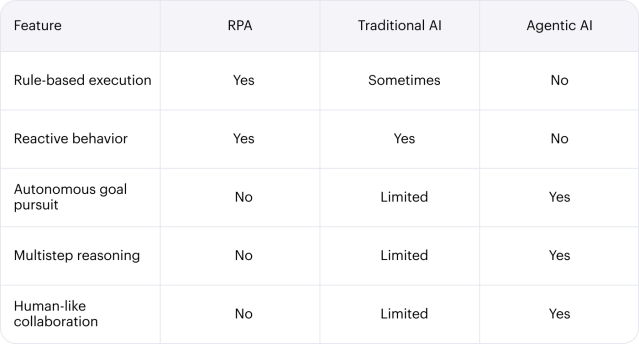AI agents at work
– 7 min read
Beyond automation: How agentic AI is reshaping CPG

During my time at Coca-Cola, we had these Freestyle machines where kids would go nuts mixing flavor combinations. Most people didn’t realize that we were using those machines as massive data collection points. When we saw consumers consistently combining ice cream flavors with lemonade and strawberry across different locations, our AI systems helped us recognize this wasn’t random — it was a signal pointing toward our next major product launch.
That was my first real encounter with AI in consumer packaged goods (CPG), and it felt revolutionary then.
Fast forward to November 2022, and everything changed again. ChatGPT created an inflection point that’s moving at warp speed. 71% of CPG leaders had adopted AI in at least one business function as of 2024, up dramatically from 42% in 2023. But here’s what’s striking — there’s not a single company in my network that isn’t taking AI seriously. This is completely different from previous tech trends.
Business lines are calling their CIOs, asking, “Can we do this? Can we do that?” There’s no waiting game anymore. The reason is simple: if you don’t adapt, the consumers you’re serving will change, and you’ll become irrelevant. Worse, digital native players will come from behind and scoop your market share.
The choice isn’t whether to embrace AI — it’s whether you’ll adapt to market realities to stay relevant to consumers.
The current reality: Beyond proof-of-concept purgatory
I can’t tell you how many times I hear from customers who’ve completed dozens of proof-of-concepts but are struggling to move beyond pilot purgatory. What they’re really looking for now is replicability and scalability across the organization — how to drive business value at an enterprise scale.
The shift from experimentation to implementation isn’t happening in a vacuum. It’s driven by fundamental changes in the CPG landscape that make AI adoption not just beneficial but essential for survival.
Three forces driving urgent adoption
The urgency comes from three forces reshaping our industry. First is scaled personalization. Consumer expectations are at an all-time high. Building awareness, driving acquisition, and creating emotional connections require hyper-personalized content. Traditional agency models can’t deliver on the need for content at scale. CPG companies are the only ones serving these diverse consumer needs, which means understanding personal preferences on a massive scale.
Second is omnichannel complexity. Fifteen years ago, brands that controlled retail shelf space controlled the market. Today, brands adopt a digital-first approach across multiple channels, each with its own algorithm and requirements. The need to launch products and run operations with minimal workforce requires AI capabilities. How do you play in these ecosystems and play to win?
Third is operational efficiency. CPG companies have thin margins, so driving efficiencies across the entire system — from marketing to sales to R&D to supply chain — isn’t optional. Global Business Services organizations are at an inflection point and driving massive adoption.
AI in action today
CPG companies deal with thousands of suppliers, but when they identify a risk, getting a new supplier to meet demands takes time. The biggest contributors are onboarding and new terms negotiation timelines. WRITER customers are using “touchless sourcing” to remove this bottleneck, automating vendor identification, RFI, and RFQ handling.
We’re also seeing breakthrough results in consumer sentiment analysis. One food and beverage company came to us skeptical about using AI for understanding consumer sentiments at scale. We delivered capabilities that synthesize consumer research in days rather than weeks at a fraction of the cost. The insights were better than what they were getting from traditional agencies.
For digital shelf management, one customer’s division has 200 SKUs that convert into 16,000 description pages across different retailers. With WRITER’s platform, we’ve seen 10X time reductions in PDP creation and companies saving 55,000 human hours annually.
The companies succeeding aren’t treating AI as a nice-to-have productivity tool. They’re using it to transform fundamental business capabilities — and they’re seeing the revenue impact to prove it.
But what’s driving these breakthrough results isn’t traditional automation or RPA. It’s a new category of AI capability that’s fundamentally changing what’s possible in business operations.
Agentic AI: Beyond simple automation
Most people think of automation as simple if-then logic. AI agents are fundamentally different because they can reason, adapt, and make decisions in situations they’ve never encountered before.

Intelligence that adapts and acts
Traditional automation follows predetermined rules. An AI agent can evaluate new information, weigh multiple factors, and choose the best course of action dynamically. The key capabilities that set AI agents apart are real-time reasoning and decision-making, autonomous workflow execution, and continuous learning from interactions.
Platform approach over point solutions
The market has moved beyond point solutions. During the POC days, companies used individual AI tools or agents. But a scalable solution needs agents that coordinate across multiple business functions and external data sources. This can’t be achieved through disconnected tools.
This is where WRITER’s approach is different. WRITER’s full-stack approach uses our Palmyra LLMs and AI HQ infrastructure. We’re building the underlying platform that allows applications to share data, learn from each other, and coordinate actions — both internally and with external systems.
Getting started: From strategy to implementation
The companies that are succeeding take a strategic, building-block approach that creates momentum while minimizing risk.
Start somewhere, start now
Many CPG leaders are waiting for the perfect use case. Meanwhile, their competitors are deploying these capabilities and gaining ground.
Successful customers start somewhere and find a trusted partner to work collaboratively. Don’t get paralyzed by 300 potential use cases. Pick one area where you can show clear value and build from there.
Choosing platforms over point solutions
If you’re serious about scaling AI capabilities, you need enterprise-grade platforms that can scale across multiple workflows and integrate with your existing technology stack.
When evaluating platforms, look for three key capabilities — security that meets enterprise standards, replicability across business functions, and cost-effectiveness that scales. Ensure the platform can grow as you add more sophisticated AI capabilities.
The building blocks strategy
Start with foundational building blocks that address immediate business needs, then add more sophisticated capabilities as your organization develops expertise.
You might begin with automated content generation for product descriptions — a low-risk application that delivers clear value.
Preparing your teams for the new reality
Your people need to understand how their roles will evolve as AI agents take on operational responsibilities. Brand managers become curators of AI creativity, setting parameters for thousands of campaign variations while focusing their time on breakthrough creative concepts. Supply chain leaders become ecosystem architects, designing the objectives and constraints within which autonomous agents operate. R&D teams become innovation strategists, identifying breakthrough opportunities that AI systems can then execute at scale.
The most successful implementations involve teams that learn to collaborate with AI systems rather than just direct them. Start this process early — the companies that make this transition successfully will find themselves operating at a completely different level of speed and sophistication.
Your next move
Companies are making decisions today that will determine whether they lead this transformation or get left behind.
While 84% of executives in other industries count generative AI among their top five priorities, only 37% of CPG executives do. This gap represents both risk and unprecedented opportunity. CPG companies that close this gap in the next 12-18 months will participate in the future of business operations. Those that fail to do so will be shut out.
No CPG company will build these capabilities alone. At WRITER, we’re working with industry leaders to create the orchestrated AI systems that will define the next decade of competitive advantage. We bring two decades of CPG industry expertise combined with the full-stack AI platform that can grow with your ambitions.
This is the most interesting time in my professional career, and it could be the most transformative period in yours. The question is — are you ready to lead it?




